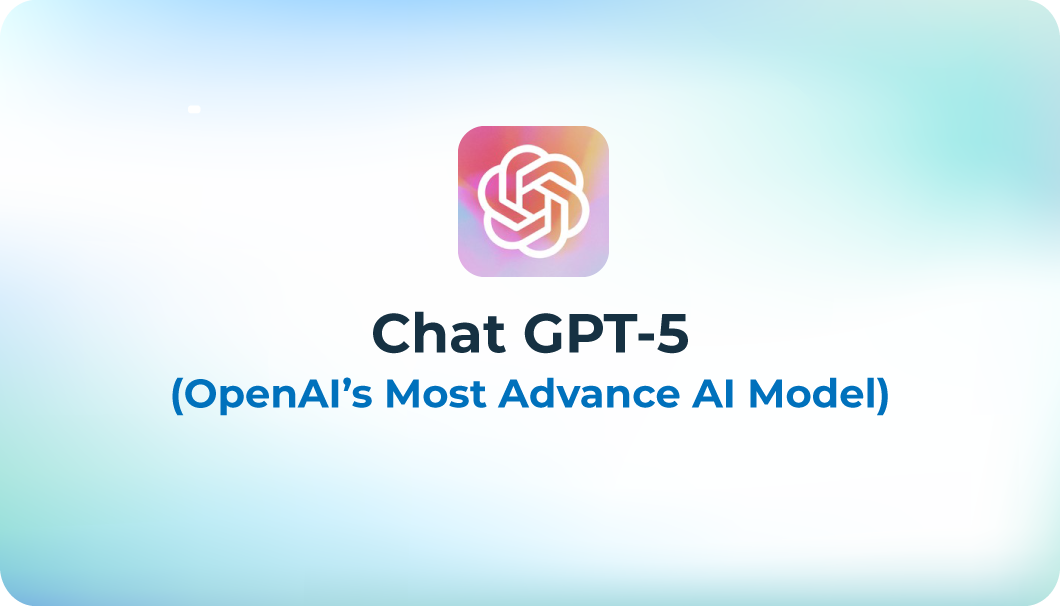OpenAI has officially launched GPT-5 on August 7, 2025, marking the biggest leap in AI yet. After the rollout of GPT-4o, o1, and o3, OpenAI hinted at something revolutionary — and GPT-5 delivers on that promise.
Unlike its predecessors, GPT 5 unifies advanced reasoning, multimodal capabilities, and massive context handling into a single system, now available to both free and paid ChatGPT users.
In this guide, we’ll cover everything about ChatGPT 5: its features, performance upgrades, model variants, cost, and how you can start using it today.
What is GPT-5? OpenAI’s Next-Gen AI Model
GPT-5 is OpenAI’s latest large language model (LLM), officially released on August 7, 2025. It builds on the GPT-4 architecture while integrating breakthroughs from reasoning-first models (o1, o3) and multimodal enhancements.
Before GPT 5, OpenAI introduced GPT-4.5 (Orion)—a transitional model that improved accuracy, reduced hallucinations, and set the stage for GPT5’s advanced chain-of-thought reasoning.
Now, OpenAI GPT 5 unifies these advancements into a single, adaptive AI system that intelligently switches between:
- Fast-response mode (for simple queries)
- Deep-reasoning mode (for complex problem-solving)
- Extended context retention (up to 400,000 tokens via API)
- Seamless multimodal switching (text, image, audio)
No more manual switching—GPT-5 automatically selects the best approach.
GPT 5 Variants: nano, mini, and Pro
OpenAI introduced a family of GPT-5 models, each optimized for speed, cost, and reasoning depth.
| Variant | Best For | Context Window | Knowledge Cutoff |
| GPT-5 | Deep reasoning, complex workflows | 400K tokens | Sep 30, 2024 |
| GPT-5 mini | Faster, cost-efficient responses | 400K tokens | May 30, 2024 |
| GPT-5 nano | Ultra-fast, real-time applications | 400K tokens | May 30, 2024 |
This adaptive system automatically routes tasks: simple queries use lightweight models, while complex problems trigger GPT-5’s “thinking” mode.
Key Features of ChatGPT-5
1. Real-Time Adaptive Reasoning
GPT-5 intelligently decides when to respond instantly and when to use chain-of-thought reasoning. This makes it far better at solving multi-step problems like code debugging, business analysis, or research tasks.
2. Massive Context Retention
With up to 400K tokens, GPT-5 can handle entire books, large codebases, or hours of transcripts while staying consistent across long sessions.
3. Multilingual & Voice Improvements
GPT-5 now provides native-quality multilingual support across major global languages, with improved voice output that sounds natural in diverse accents.
4. AI Agent Capabilities
Thanks to ChatGPT Connectors, GPT-5 can interact with tools, databases, CRMs, and apps directly. Instead of running every step through high-cost reasoning, connectors allow cost-efficient task automation.
Read Also: OpenAI GPT-5 vs Claude Opus 4.1 Comparison
GPT-5 Pricing: How Much Does It Cost?
GPT-5 is available via ChatGPT subscriptions and the OpenAI API, with pricing varying by variant:
API Pricing (Per 1M Tokens)
| Model | Input Cost | Output Cost |
| GPT-5 | $1.25 | $10.00 |
| GPT-5 mini | $0.05 | $0.40 |
| GPT-5 nano | $0.25 | $2.00 |
| GPT-4o | $2.50 | $10.00 |
| GPT-o3 | $3.00 | $12.00 |
ChatGPT Access Tiers
- Free Tier – GPT-5 with usage limits
- Plus – Higher limits, faster responses
- Pro – Access to GPT-5 Pro, extended context, and priority tools
How to Access OpenAI GPT-5 (2025 Guide)
You can start using GPT-5 in two ways:
- ChatGPT App (Free & Paid Plans) – Simply log in, and GPT-5 is the default model. No setup needed.
- OpenAI API – Developers can choose between GPT-5, mini, and nano for custom workflows. Access via: OpenAI Platform or Official Python SDK for integration into apps and scripts
Conclusion
The launch of GPT-5 marks a new era in AI — combining deep reasoning, large-scale context, and multimodal capabilities into one unified model.
Whether you’re an everyday ChatGPT user, a business looking for AI-powered automation, or a developer building custom apps, GPT-5 provides the speed, accuracy, and flexibility to power the future of AI.
